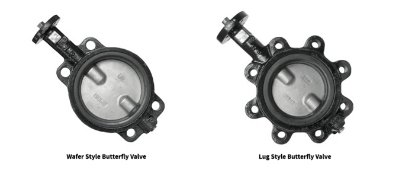What is the difference between LUG AND WAFER TYPE OF BUTTERFLY VALVE ?
LUG BUTTERFLY VALVE
The lug version of the butterfly valve's design is similar to a 3-piece ball valve in that one end of the line can be taken off without having an effect on the opposing side. This can be executed by using threaded inserts, flanges, along with two sets of lugs (bolts) that don't utilize nuts since each flange features its own bolts. It's also important to note that you don't need to shut down the entire system in order to clean, inspect, repair, or replace a lug butterfly valve (you would need to with a wafer butter valve).
WAFER BUTTERFLY VALVE
A wafer butterfly valve's function is to retain a seal to protect against dual-directional pressure differential in the flow of fluid. In other words, the wafer version of butterfly valves was designed to hold a tight seal, safeguarding against bi-directional pressure differential in order to avoid any backflow in systems that have been manufactured for uni-directional flow. This is accomplished by using a tightly fitted seal, such as an O-ring, gasket, precision machined, along with a flat valve face on the downstream and upstream sections of the valve.
Both lug and wafer butterfly valves are used in a number of applications for industrial sectors that include food processing, pharmaceutical, chemical, oil, water as well as waste water management. The valves utilized in these industries are generally manufactured in compliance with the "Pharmaceutical Quality/Manufacturing Standard", cGMP (current good manufacturing practice) guidelines. Butterfly valves for the most part have replaced ball valves in a lot of industries. This is especially the case for those dealing with petroleum because of they are less expensive and easy to install. It's important to note that pipelines that contain butterfly valves can't be 'pigged' for cleaning. "Pigging" is the process of making use of devices referred to as "pigs" to carry out a variety of maintenance operations.

